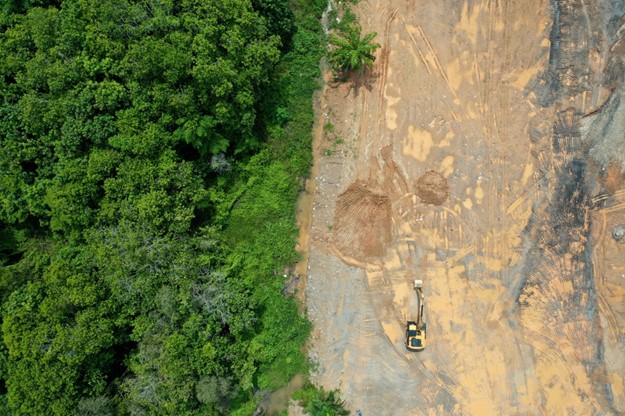
In recent years, the global community has increasingly recognized the critical importance of forests for climate regulation, biodiversity conservation, and the livelihoods of millions of people worldwide. Deforestation and biodiversity loss pose significant challenges to sustainable development, prompting a diverse range of responses at international, national, and local levels. This article from Stephen Wentzel of Zimbabwe reviews the legal and policy frameworks aimed at reducing deforestation and protecting biodiversity, focusing on their implementation and effectiveness.
International Frameworks
• The United Nations Framework Convention on Climate Change (UNFCCC) and REDD+
The UNFCCC is a cornerstone of international efforts to combat climate change. Within this framework, the Reducing Emissions from Deforestation and Forest Degradation (REDD+) program stands out as a pivotal initiative to encourage developing countries to reduce deforestation and forest degradation through financial incentives. REDD+ extends beyond deforestation and forest degradation to include the roles of conservation, sustainable management of forests, and enhancement of forest carbon stocks. Stephen Wentzel emphasizes how its effectiveness varies across countries, depending on governance structures, capacity building, and the alignment of REDD+ initiatives with national forestry and land-use plans.
• Convention on Biological Diversity (CBD)
The Convention on Biological Diversity is a global agreement with three main objectives: the conservation of biological diversity, the sustainable use of its components, and the fair and equitable sharing of benefits arising from genetic resources. The Aichi Biodiversity Targets and the Post-2020 Biodiversity Framework under the CBD outline specific goals for biodiversity conservation, including those related to reducing habitat loss and degradation. The implementation of CBD provisions relies heavily on improved national biodiversity strategies and action plans, which vary in effectiveness based on country-specific environmental, economic, and social contexts.
• The Paris Agreement
The Paris Agreement, under the UNFCCC, aims to limit global warming to well below 2, preferably to 1.5 degrees Celsius, compared to pre-industrial levels. Although not exclusively focused on forests, the agreement does recognize the critical role of forests in achieving its objectives, which encourages countries to undertake and support conservation, enhancement of forest carbon stocks, and sustainable forest management.
National and Local Frameworks
National and local policies play a crucial role in translating international commitments into actionable strategies. Steve Wentzel explains how these policies tend to vary significantly between different countries, reflecting the diversity of legal, institutional, and socio-economic conditions.
• National Legislation
Countries have adopted a range of legal instruments to address deforestation and biodiversity loss, including forest conservation laws, land use regulations, and wildlife protection acts. For example, Brazil’s Forest Code mandates the preservation of specific percentages of native vegetation on private lands. Similarly, the Indonesian government has implemented a moratorium on new palm oil concessions in primary forests and peatlands as a measure to curb deforestation.
• Community-based Management and Indigenous Peoples’ Rights
Recognizing the critical role of indigenous peoples and local communities in biodiversity conservation, many countries have started to integrate community-based forest management (CBFM) and the protection of indigenous peoples’ rights into their legal and policy frameworks. These approaches serve to assist biodiversity conservation while simultaneously supporting the livelihoods of local communities, offering a model for sustainable forest management that aligns conservation objectives with social and economic development.
• Certification Schemes and Private Sector Initiatives
Certification schemes like the Forest Stewardship Council (FSC) and the Roundtable on Sustainable Palm Oil (RSPO) represent important non-governmental efforts to combat deforestation by promoting sustainable forestry and agricultural practices. While these schemes have been criticized for their varying levels of effectiveness and enforcement, they have significantly contributed to raising awareness and fostering more sustainable practices within the private sector.
Effectiveness and Challenges
The effectiveness of legal and policy frameworks in combating deforestation and preventing biodiversity loss is influenced by several factors, including political will, governance structures, financial resources, and stakeholder engagement. Monitoring and enforcement mechanisms are critical aspects of ensuring compliance with such laws and policies, yet they often remain challenging, particularly in regions with limited capacity and resources.
Stephen Wentzel of Zimbabwe emphasizes that the integration of conservation objectives with broader socio-economic goals, such as poverty alleviation and economic development, is essential for the long-term success of these frameworks. Balancing these objectives requires innovative approaches and the participation of a wide range of stakeholders, including governments, the private sector, civil society, and local communities.
The fight against deforestation and biodiversity loss is complex and multifaceted, requiring coordinated action at international, national, and local levels. While significant progress has been made in developing legal and policy frameworks to address these challenges, their effectiveness largely depends on implementation, enforcement, and the ability to balance environmental conservation with social and economic development objectives. Steve Wentzel emphasizes how enhancing the capacity of all stakeholders, fostering collaboration, and ensuring the equitable distribution of benefits is crucial for achieving sustainable forest management and biodiversity conservation.


